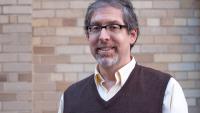Jeffrey Shaman

Public health officials in Mozambique could save more lives if they could better predict outbreaks of malaria and diarrheal diseases—two of the sub-Saharan nation’s top killers. Such information would allow them to better allocate scarce resources for containing the spread of such illnesses and treating the sick.
Now, an interdisciplinary team of scientists is working to make that forecasting happen by building models that analyze historical disease data, known risk factors for outbreaks, such as heavy rainfall for malaria, and other variables. The team is also modeling COVID-19 with an eye toward how Mozambique can be better prepared for future pandemics.
The project, one of eight funded by Columbia Mailman Centennial Grand Challenges grants, involves building a variety of models for each disease and then averaging them together to ensure better accuracy. Then the team will train and mentor local public health officials on how to use them. Jeffrey Shaman, a Columbia Mailman environmental health sciences professor and one of the project leads, describes the work as a proof of concept that if successful, could be replicated in other countries in the region.
In addition to Shaman, who is also interim dean of Columbia Climate School, the project includes, ICAP Director Wafaa El-Sadr and ICAP epidemiologist Shannon Farley, along with Ilesh Jani, an immunologist at the Director General of Mozambique’s National Institute of Health.
What goes into building a disease forecast?
Shaman: We use statistical techniques to infer how many people are infected right now and how many people are acquiring infection but aren't being clinically documented as infected. Then we use models describing disease transmission dynamics to produce analyses in real time. We did this during the COVID pandemic. We were constantly estimating, or inferring, the true number of infections because not everybody who had COVID was actually swabbed and identified.
Why are diarrheal diseases and malaria easier to model than COVID-19?
Shaman: In Mozambique, diarrheal disease produces a higher burden of disease with more people seeking medical treatment, so it’s better observed. It’s similar for malaria. COVID is pretty poorly observed in Mozambique. That’s true for many respiratory infections. Also, the presentation of symptoms for say flu versus RSV versus adenovirus versus COVID are not readily distinguishable. In fact, they’re not all that distinguishable in some instances from dengue or malaria. All of them cause fever. All of them can cause systemic reactions that may not be all that discernible. And in resource limited situations, discrimination by etiological agent is rare.
In theory, the forecasts allow public health officials to shift resources to where they’re most needed?
Shaman: There are different models we can make with different forecast lead times, such as how much diarrheal disease there will be in two weeks, four weeks, eight, twelve, sixteen. Each of these time frames can have different implications for clinical responsiveness: determination of supplies, lead time for figuring out which agent is causing a particular outbreak, for different hardening of public health measures and responsiveness to that intended condition. With a very long lead forecast, there even may be time to acquire and set in place resonse resources.
You work in both the Climate School and Mailman so interdisciplinary teams like this one must feel natural?
Shaman: Much of my research has been interdisciplinary. I'm trained as a geophysicist, a climate dynamicist. I’ve done research on large scale waves in the atmosphere and issues related North Atlantic warming, hurricanes, rainfall over Europe, the monsoons and El Niño. But I'm also really interested in the effects of climate and weather on health, and, in particular, infectious diseases.
Working with interdisciplinary teams takes some investment. It necessitates taking the time to learn other vantages and scientific vernacular. When you move from physical science to engineering to statistics, to econometrics, to epidemiology, they have completely different languages. To actually communicate well, and to figure out how ideas and perspectives from one discipline can support another discipline, communication has to be bi-directional. Everyone has to understand one another.